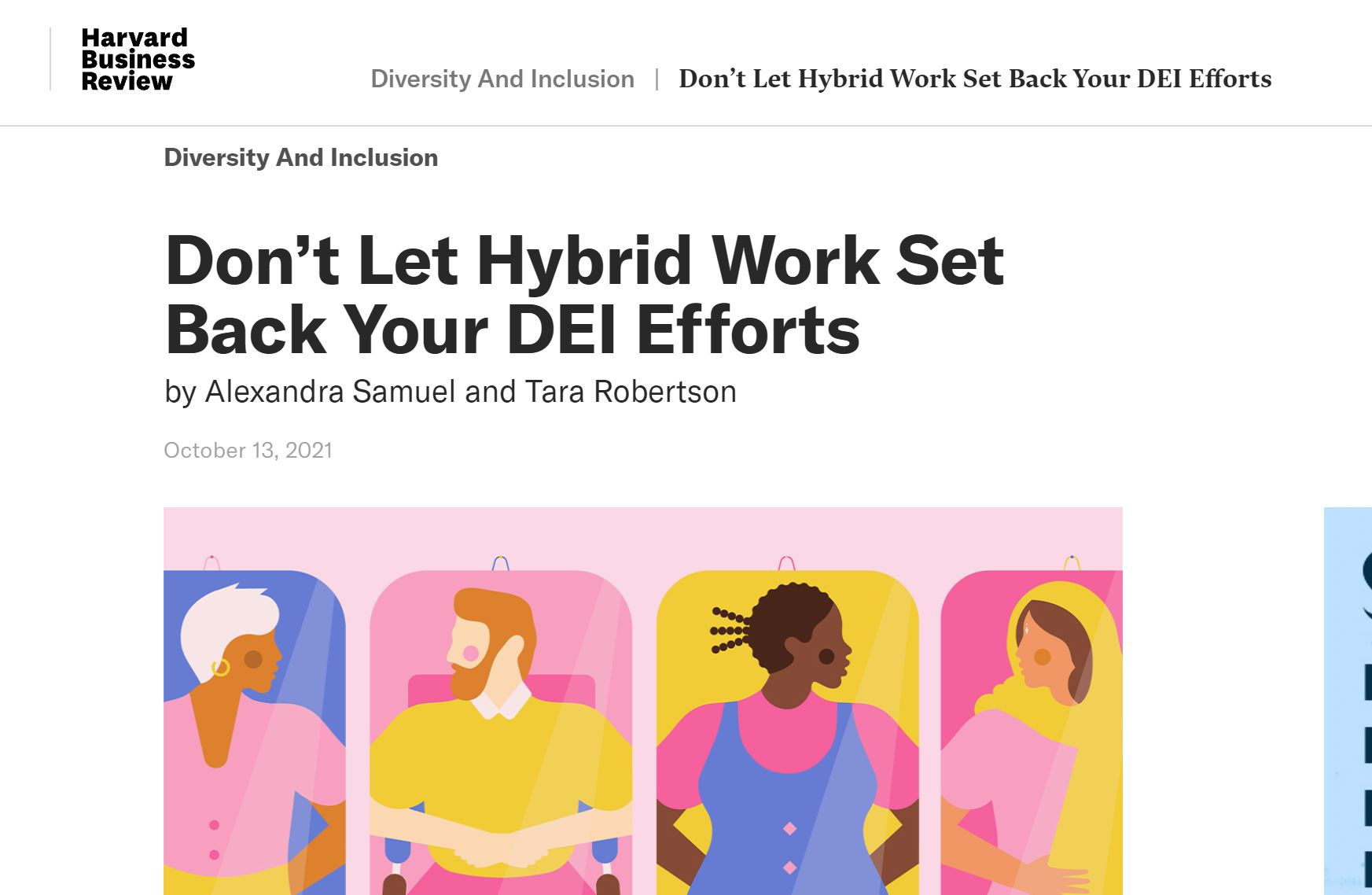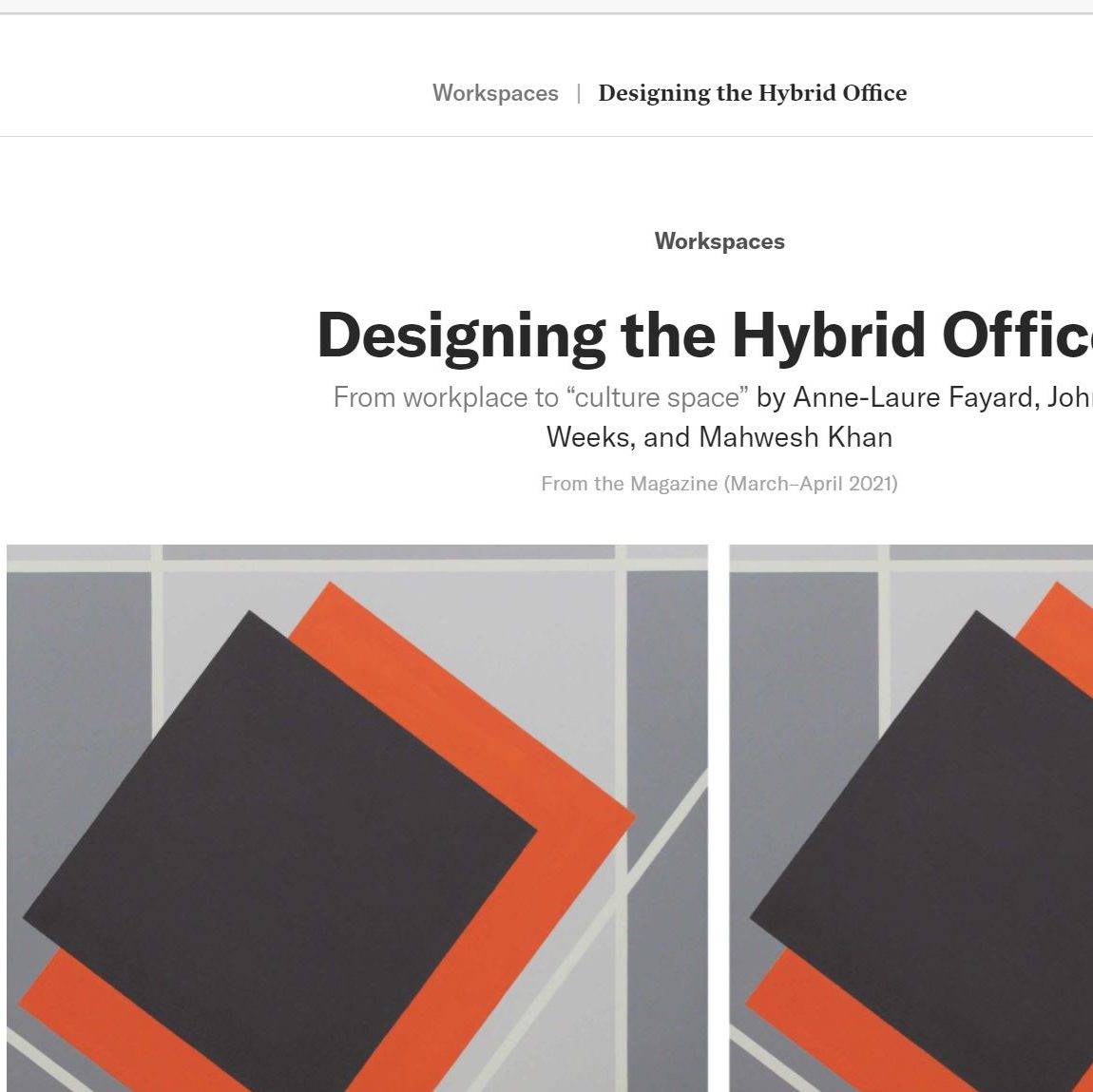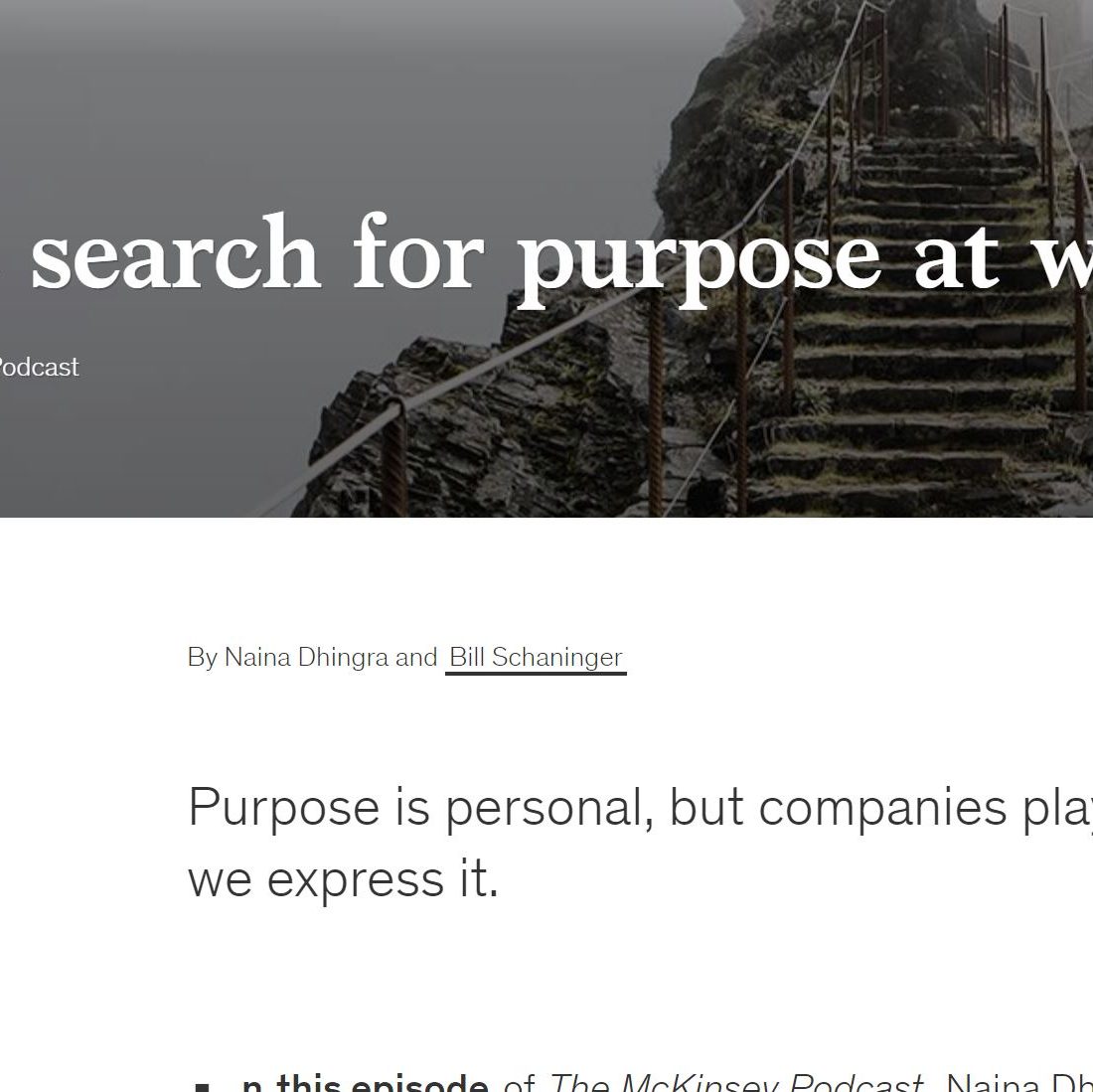Inclusion Agenda
Financial Conduct Authority
FCA thought paper that emphasises the importance of data in driving impactful D&I change but with the warning that while data provides an essential benchmark, it does not lead to change on its own. Insights need to be drawn from the data and factored into an analytical framework for an organisation to fully understand where to direct resources and leadership attention. Organisations need to capture more than diversity metrics – focusing on indicators that point to an inclusive culture is just as important.
McKinsey & Company
Insightful podcast (transcript also available) on the deliberate and at times aggressive action that’s required to challenge decision making across the whole employee lifecycle to develop inclusive workplaces. The focus on diverse boards is good but Boards have a governance rather than leadership role, so organisations also need representation in the talent pipeline. Use AI to reveal deeper insights rather than for comparison against an existing population which is likely to lack diverse representation. And remember, inclusion is characterised by the relationship people have with their boss, their peers and how they experience the policies and practices of the firm in which they work. Use all three levers to create an inclusive workplace.
Diana Ellsworth, Drew Goldstein and Bill Schaninger
The authors make the case that increasing diversity by itself is insufficient – organisations must also enhance inclusion, which they define as “the degree to which employees are embraced and enabled to make meaningful contributions.”
This brief post introduces a simple framework for measuring inclusion which takes into account both ‘enterprise perception’ i.e. views on the fairness of the organisation, alongside ‘personal experience’ – i.e. the sense of individual belonging, authenticity and being valued.
Inclusive Leadership
The FT asked four international executives for their views on how the pandemic has affected women and minorities, and the specific actions they are taking in response. Although the contexts varied – each acknowledged the disproportionate impact of the pandemic and described how they were adapting their workplaces, work patterns and working practices to be more flexible, hybrid and inclusive. The main takeaway was the need to be deliberately responsive, rather than passive in the face of significant change.
Brian Elliott
Evolving models of work indicate that the Middle Manager’s role is changing substantially. The good news is that they have never been more important in developing talent, activating collaboration across a group by leading inclusively and communicating a shared vision and purpose. Inclusion sits at the heart of this shift.
Simran Jeet Singh
Simran Jeet Singh argues that it’s essential to hold three forms of identity together – identities, experiences and expertise, when auditing the effectiveness of Board decision making. This will help avoid tokenism and set the Board up to effectively oversee an ever changing future context. This approach will help leverage the collective perspectives of board members and ensure longer-term success.
Taking Action
Business in the Community and Hogan Lovels
Guidance on approaches to introducing Ethnicity Pay Gap Reporting, taken from an analysis of signatories to the Race at Work Charter. Designed to start a conversation about an area of policy that is in flux, it debunks legal myths, provides case studies of how different organisations are approaching the area as well as an analysis of the anatomy of a really powerful ethnicity pay gap report.
by James M. Citrin and Darleen DeRosa
The reality of onboarding new employees remotely is going to stick with us all for some time to come. Onboarding is definitely one of those ‘Moments that Matter’ in an employee’s life cycle with their new company. This article considers how you can establish the basis for success for all new remote employees. Being explicit in terms of expectations, creating a cultural buddy to support each new colleague are two suggestions that will over the way for that success. There are many more. The truth is that new employees must feel welcome and included in the company to ensure they are happy and productive as soon as possible
Naomi Wheeless
Four key lessons here for organisations aiming to diversify their talent base. And above all it requires courage and determination to stick to your plan. Some interesting insights on being public about your objectives, ensuring hiring panels are diverse, reviewing job descriptions and as ever start at the top.
Ways of Working
Alexandra Samuel and Tara Robertson
As organisations shift towards hybrid working, how do leaders ensure that the equity-enhancing aspects of remote working are maintained? Tracking data to assess who is working from home and who is spending more time in the office is key, along with leaders role modeling inclusive hybrid working practices. It’s also crucial to monitor the link between the path to promotion and time in the office to avoid people who spend more time in the office advancing faster. The move to hybrid working could be beneficial to everyone – let’s ensure it enhances inclusion rather than exacerbate inequity.
McKinsey & Company
Employers are grappling with how and where people will work after fully working remotely. This article explores the reality that many people are struggling with the relationship they have with both work and their employers and many are expecting to move job. It also refers to the need for leaders to embrace fallibility, being open that they may not have all the answers and also for them to genuinely listen to their staff and hear what they want. Creating a workplace with inclusion and wellbeing at its heart will be essential as the workplace continues to evolve
In response to the pandemic, the purpose of offices is being revisited as companies adapt to a new hybrid working model. This article explores how forward thinking companies are developing spaces to provide workers with an opportunity to make connections, engage in unplanned innovation, build relationships and foster a learning environment.
Wellbeing
Jennifer Moss
This article describes how ‘our always-on world’ was already fuelling a burn-out crisis – and this has only been compounded by the extreme pressures of Covid-19. Working from home, health worries, grief, home-schooling, loneliness, over-working, online meeting fatigue, lack of autonomy and job insecurity all combined to turn acute stress into chronic stress.
In this piece, burnout is positioned as an organisational problem that requires an organisational solution – and it’s one leaders can’t afford to ignore. It advises focusing on ‘upstream interventions’ – instead of relying on self-care or wellbeing tactics to fix a systemic problem. This includes addressing unsustainable workloads, being open about mental health and developing the empathy of managers.
McKinsey and Company
The need to include employees in plans and keep them appraised of the future working environment is a critical enabler for inclusion. The consequences of not doing so can be increased anxiety which leads to burnout and ultimately the potential loss of key talent. This piece provides compelling evidence of the need to improve staff communications to allay those concerns and to ensure people feel a part of the organisation
Laura M. Giurge and Vanessa K. Bohns
The pandemic stimulated a sudden and unpredicted transition to remote working for millions of people. This rapid shift left some employers concerned about drops in productivity, when instead they should be more worried about the long-term risk of employee burnout. Ambiguous boundaries between our professional and personal lives, anxious over-delivery and excessive hours all present a very real threat to employee well-being. The piece shares some pragmatic recommendations for mitigating this risk and maintaining vital boundaries.
Anti-Racism
Yasmine Chinwala and Jennifer Barrow
New Financial report that focuses on the progression of Black colleagues into leadership positions in the UK finance sector. Based on interviews with the most senior cohort of Black professionals across the industry, the report captures their experiences in response to George Floyd’s death; their involvement with the Black inclusion agenda and how it has changed since May 2020; and discuss their career trajectories, in order to both draw out any barriers they may have faced as they progressed to senior roles as well as inform organisational actions to better support Black colleagues.
Catalyst – Sheila Brassel, Joy Ohm and Dnika J. Travis
Research was conducted by Catalyst into the factors that positively change the workplace experience for people of colour. The article describes the negative impact of bias, discrimination and the costs of being ‘on guard’ at work, whilst also showing how leaders can help to change this.
Leaders who display allyship and curiosity help to reduce the need for people of colour to feel on guard, which increases inclusion and that in turn affects the intent to stay at the organisation. The research outlines what this means in practice and also cautions against ‘performative allyship’ either by individual leaders or the organisation as a whole.
Stephanie Bradley Smith, Harvard Business Review
Harvard Business Review article that calls for 5 specific actions to encourage more impactful sponsorship of Black women: Reimagine the diversity imperative, audit succession plans annually, make sponsorship visible, reward those who sponsor and examine the barriers to career progression for Black women.
Open Mind
Luvvie Ajayi Jones
Luvvie Ajayi Jones describes herself as a “professional troublemaker”, who speaks up in the hope that others will follow suit; “for a lot of dominos to fall, one has to fall first”. She is aware of the potential consequences of speaking truth to power – but sees staying quiet as an over-rated comfort, “People and systems count on our silence to keep us exactly where we are.”
McKinsey & Company
Podcast and transcript of a conversation focusing on how Covid has brought to the fore the importance of purpose and the role of organisations in building an environment where individuals can realise their purpose. Underpinning research suggests that the driver for this focus is clear – nearly seven out of ten employees are reflecting on their purpose because of the pandemic and those who say that they live their purpose at work are six times more likely to want to stay at the company.
There are certain things that large numbers of people believe, despite the most straightforward evidence to the contrary” – in this article, economist and journalist Tim Harford explores why we fool ourselves. He describes the power of “motivated reasoning” – the in-built incentive to be attached to wishful thinking. It leads us to think about a topic with the aim of reaching a particular conclusion – and can fuel bias in anything from hiring patterns to purchasing decisions.





















